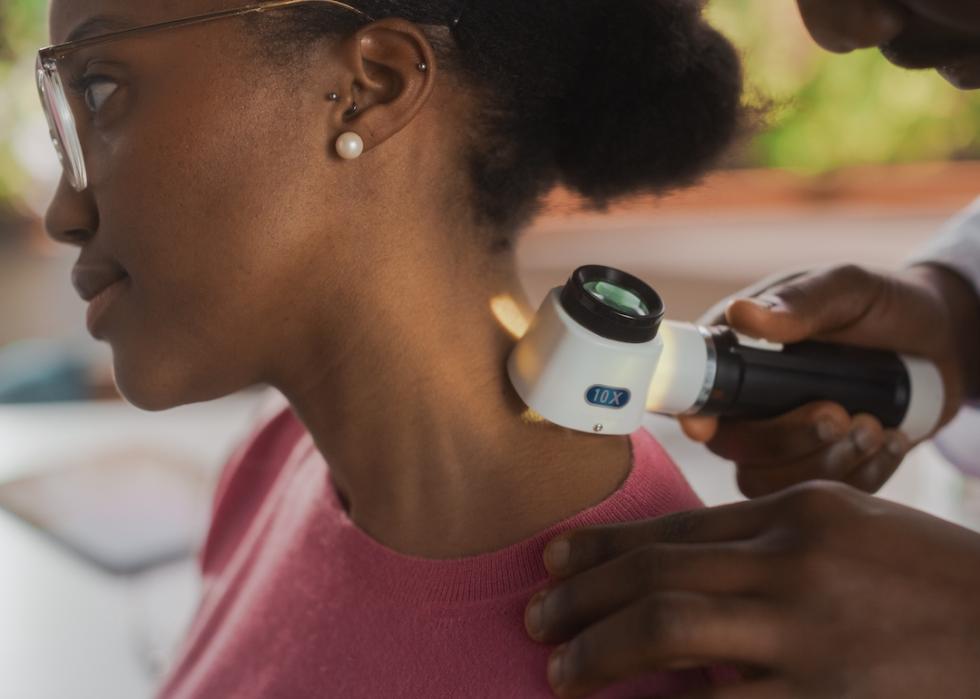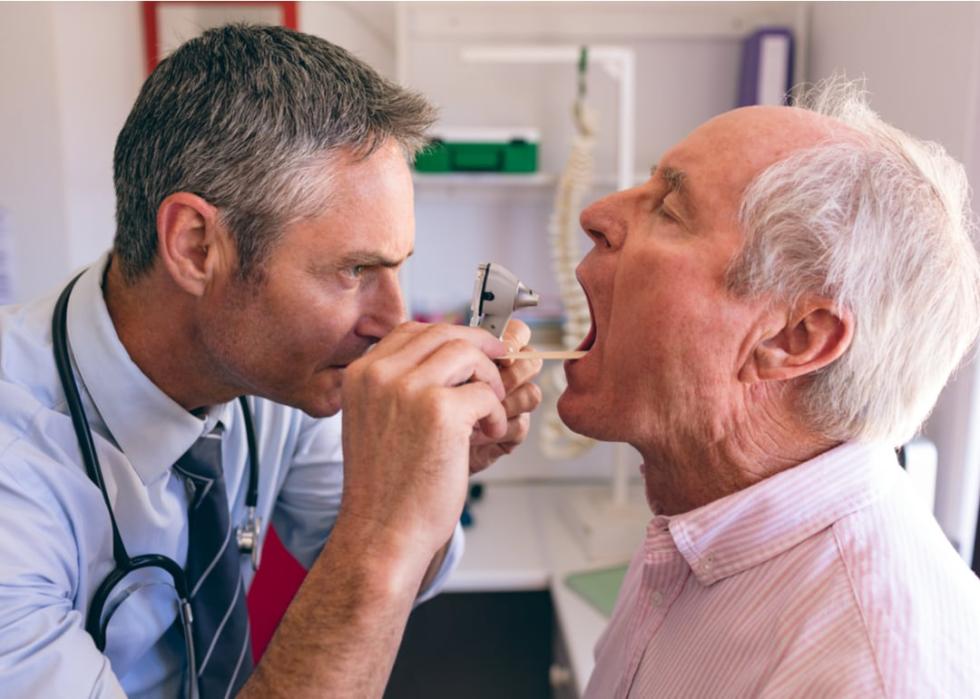
Types of cancer on the rise
Types of cancer on the rise
Cancer's prominence affects all of us, whether directly through a diagnosis or indirectly by impacting a family member or friend. Alarmingly, those cases are on the rise for many types of cancer and for the under-50-year-old demographic.
A study published in August 2024 found that millennials and members of Generation X face higher rates of 17 different cancers—including breast, gallbladder, uterine, and colorectal—than older generations. In some countries, cancer has already surpassed heart disease as the leading cause of death.
Though the overall cancer death rate currently appears to be decreasing in the United States, the American Cancer Society predicts that 2025 will see new case numbers surpass 2.04 million, with prostate cancer accounting for 30% of diagnoses in men and breast cancer leading to 32% of diagnoses among women. Joe Biden announced in May 2025 that he is among those new prostate cancer patients. The news that the 82-year-old former president is dealing with a Stage 4 diagnosis came just four months after he left office.
To determine which kinds of cancer are becoming increasingly more common stateside, Stacker compiled a list of 10 types of cancer that have had the greatest jump in case frequency based on data from the Centers for Disease Control and Prevention. To come up with the list, the annual number of new cancer cases per 100,000 people in 2000, 2010, and 2021 (the most recent year for which data is available) were averaged to determine the increasing trend of certain types of the disease. Ties were broken down by how common the form of cancer was in 2021.
Regular medical checks increase the likelihood of early detection, offering the best possible outcome for any cancer diagnosis. Read on to learn which forms of cancer are on the rise.

#10. Retroperitoneal sarcoma
- New cases in 2000: 0.4 per 100,000 people
- New cases in 2010: 0.4 per 100,000 people
- New cases in 2021: 0.5 per 100,000 people
- Increase in new case rates from 2000 to 2021: 25.0%
This type of malignant tumor afflicts the soft tissue at the back of the abdomen—the location of organs like the kidneys, pancreas, and bladder, as well as major blood vessels. While relatively uncommon compared to other types of sarcoma, retroperitoneal sarcoma occurs most often in adults around 50 years old. Doctors typically treat these tumors with surgery, though in some cases, radiation may be recommended first.

#9. Uterus, not otherwise specified (NOS)
- New cases in 2000: 0.8 per 100,000 people
- New cases in 2010: 0.8 per 100,000 people
- New cases in 2021: 1 per 100,000 people
- Increase in new case rates from 2000 to 2021: 25.0%
Most uterine cancers fall into the cervical or endometrial categories, but occasionally, more aggressive cancer may occur in other areas of the uterus (i.e. uterine cancer not otherwise specificed). Overall, uterine cancers represent one of the few types of cancer for which the death rate has continued to rise, increasing by roughly 1.7% every year since the mid-2000s. Furthermore, research published in 2022 revealed that uterine cancers present a greater threat to Black women, who are the most likely to die from the disease. Treatments include surgery to remove the uterus (hysterectomy), chemotherapy, and radiation.

#8. Kidney and renal pelvis cancer
- New cases in 2000: 12.7 per 100,000 people
- New cases in 2010: 16 per 100,000 people
- New cases in 2021: 17 per 100,000 people
- Increase in new case rates from 2000 to 2021: 33.9%
The renal pelvis is the part of the kidney that connects to tubes called ureters, which carry urine to the bladder. Typical symptoms of this disease are blood in the urine and constant back pain on one side. Surgery is a common form of treatment, including potentially the removal of the entire kidney.

#7. Melanomas of the skin
- New cases in 2000: 16.1 per 100,000 people
- New cases in 2010: 20.1 per 100,000 people
- New cases in 2021: 23 per 100,000 people
- Increase in new case rates from 2000 to 2021: 42.9%
One of the most common cancers to appear in people under 30, melanomas of the skin start in the melanocytes, or the cells that give the skin its pigmentation. Though melanomas make up only 1% of all skin cancers, these tumors account for the majority of skin cancer-related deaths, making early, aggressive treatment a necessity. Melanomas are typically treated using chemotherapy, surgery, radiation, immunotherapy, and targeted therapy, which specifically attacks the affected cell molecules.

#6. Tongue cancer
- New cases in 2000: 2.7 per 100,000 people
- New cases in 2010: 3.3 per 100,000 people
- New cases in 2021: 3.9 per 100,000 people
- Increase in new case rates from 2000 to 2021: 44.4%
There are different types of cancers that grow on the tongue, but overall, this cancer is more common in older age groups and in men. Risk factors for tongue cancer include smoking, alcohol intake, and having the sexually transmitted disease HPV. Some symptoms of oral tongue cancer include a lump that resembles an ulcer. For cancers that occur at the base of the tongue, there are minimal symptoms in the beginning stages, but as the illness progresses, one might experience difficulty swallowing and a sense of fullness in the throat.

#5. Anus, anal canal, and anorectal cancer
- New cases in 2000: 1.4 per 100,000 people
- New cases in 2010: 1.8 per 100,000 people
- New cases in 2021: 2.1 per 100,000 people
- Increase in new case rates from 2000 to 2021: 50.0%
Stool exits the body via the anus, which sits below the rectum and serves as the end of the GI tract. Anal cancer, which is distinct from rectal cancer, most commonly presents as squamous cell carcinoma.

#4. Small intestinal cancer
- New cases in 2000: 1.7 per 100,000 people
- New cases in 2010: 2.4 per 100,000 people
- New cases in 2021: 2.7 per 100,000 people
- Increase in new case rates from 2000 to 2021: 58.8%
The small intestine brings digested food from your stomach to the large intestine. This small bowel processes food and absorbs nutrients from it into your body. Despite the small intestine comprising the most significant portion of the gastrointestinal tract, small intestine or small bowel cancers are far rarer than other GI cancers in the U.S. Examples of small-bowel cancers are adenocarcinoma, lymphoma, and sarcoma.

#3. Tonsil cancer
- New cases in 2000: 1.4 per 100,000 people
- New cases in 2010: 2 per 100,000 people
- New cases in 2021: 2.3 per 100,000 people
- Increase in new case rates from 2000 to 2021: 64.3%
Men are three times more likely than women to be diagnosed with tonsil cancer. The disease usually manifests as a constant sore throat, mouth pain, and difficulty chewing and/or swallowing. Tonsil cancer is usually diagnosed through blood tests and X-rays to examine if the tumor has spread to other areas of the body such as the lung. Treatment options for tonsil cancer include surgery, radiation therapy, and chemotherapy.

#2. Thyroid cancer
- New cases in 2000: 7.4 per 100,000 people
- New cases in 2010: 13.8 per 100,000 people
- New cases in 2021: 12.6 per 100,000 people
- Increase in new case rates from 2000 to 2021: 70.3%
The thyroid is a gland in the neck that produces hormones that control your heart rate, blood pressure, body temperature, and weight. When diagnosed early, thyroid cancer is one of the most treatable types of cancer. Although doctors do not know what causes thyroid cancer, it is more prevalent in women and those with radiation exposure.

#1. Oropharyngeal cancer
- New cases in 2000: 0.4 per 100,000 people
- New cases in 2010: 0.5 per 100,000 people
- New cases in 2021: 0.9 per 100,000 people
- Increase in new case rates from 2000 to 2021: 125.0%
Oropharyngeal cancer occurs when malignant cancer cells are detected in the oropharynx, the middle part of the throat. The oropharynx plays a huge role in where air, food, and fluids pass through. Oropharyngeal cancer has been on the rise for years with an estimated 12,230 deaths in the U.S. in 2024. Treatment options include chemotherapy and radiation therapy.



